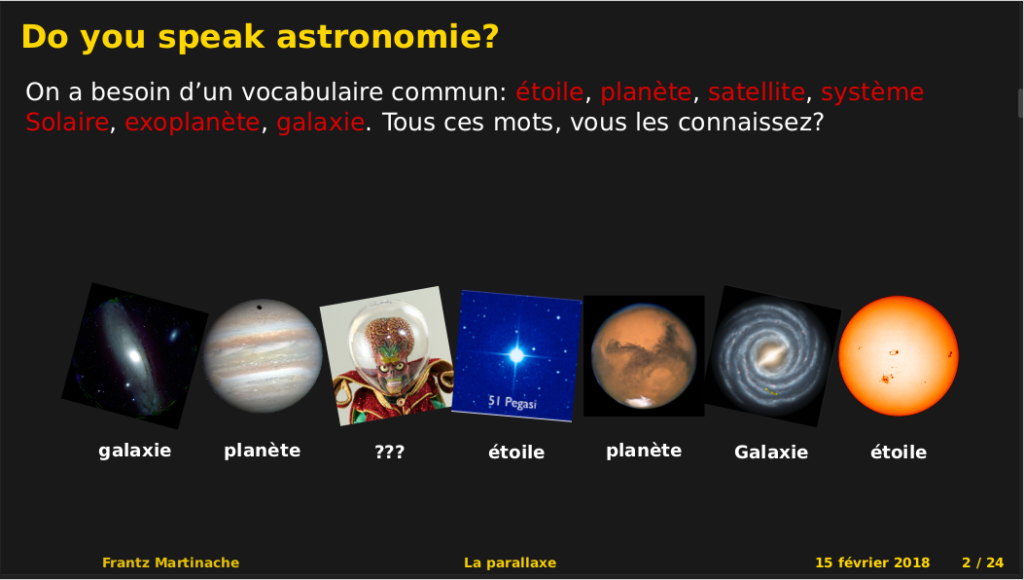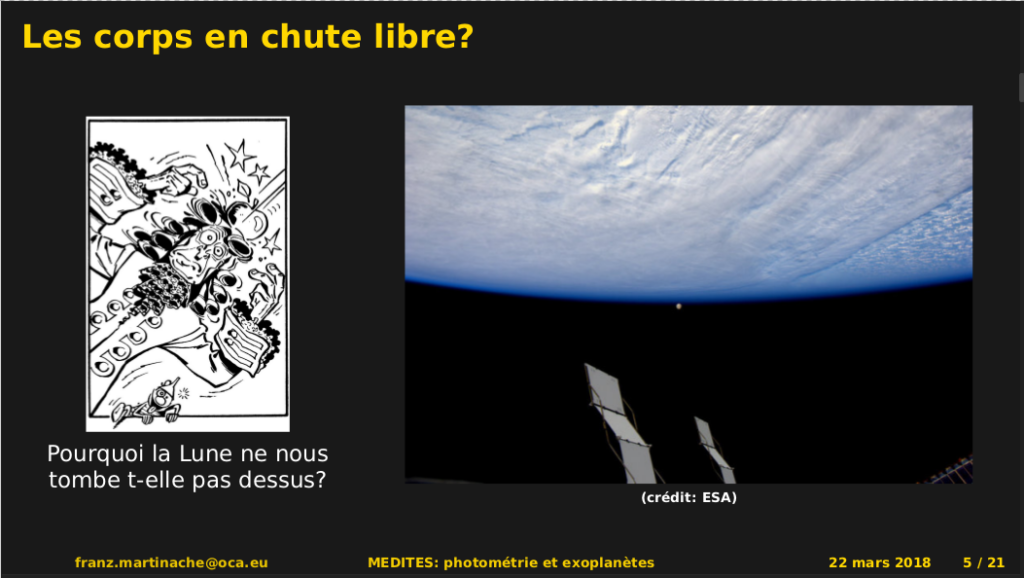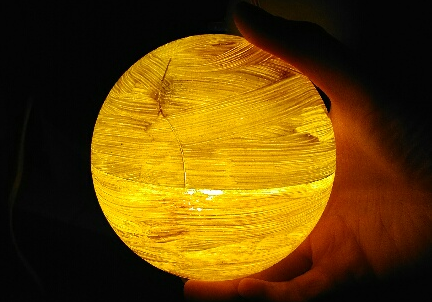Pour la troisième année, j’interviens dans le programme MEDITES dans un parcours pédagogique qui présente la recherche en astrophysique à des élèves du secondaire. Cette année, le parcours est focalisé sur les méthodes observationnelles en astronomie: astrométrie, photométrie et spectroscopie, et parlent en particulier de la mission Gaia. Les supports des présentations que j’ai préparés pour l’astrométrie et la photométrie sont disponibles ici.
La parallaxe: trouver notre place dans l’univers

Photométrie et exoplanètes

Pour ce parcours, j’ai mis au point et construit une expérience constituée d’un simulateur motorisé de couple étoile-planète et d’une mesure photométrique temps réel par une photodiode connectée à une carte Arduino. J’ai également développé un petit programme d’acquisition des données collectées par la carte Arduino qui permet de faire du traitement a posteriori des données photométriques. Un tutoriel décrivant la fabrication et l’utilisation de cette expérience sera publié cette année par le site du service éducatif de l’Observatoire de la Côte d’Azur.

